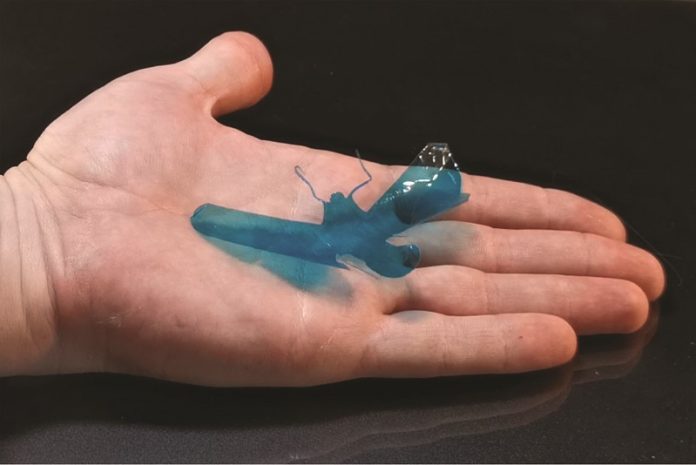
Scientists at the Advanced Science Research Center (ASRC) at the CUNY Graduate Center have developed a new approach to understanding how water-responsive materials—those that can change shape by absorbing or releasing water—actually work.
These materials, commonly found in nature, could transform fields like robotics, smart textiles, bioelectronics, and clean energy systems, thanks to their unique ability to respond to humidity changes.
While researchers have been exploring water-responsive materials for various applications, there’s been a lack of clear understanding about how these materials create mechanical force when they absorb or release water.
Professor Xi Chen, who leads the team at the ASRC Nanoscience Initiative and the Chemical Engineering Department at City College of New York, aimed to bridge this gap.
“Materials that react to humidity changes hold great potential as small devices that generate movement, like actuators in robots or tools to gather energy,” Chen explained.
“However, until now, we didn’t have the theories to fully explain or predict the stress they produce when they interact with water.”
Working with postdoctoral researcher Darjan Podbevšek, the team developed a quantitative method to connect the way water is structured within these materials to the large-scale mechanical properties we see, using silk as a model material.
Podbevšek explained that “nanoconfinement”—the effect of water molecules confined in tiny spaces—plays a key role in how these materials behave.
By studying how water molecules act within these materials, the team created a model to predict how much force they could produce.
Their study, published in Nature Communications, is the first to show that the behavior of water inside the material, rather than the structure of the material itself, is what causes stress in water-responsive materials.
The researchers found that once a material reaches a certain balance between its bound and mobile water (two types of water molecules within the material), it begins to produce force. This discovery could help scientists establish guidelines for designing water-responsive materials with predictable behaviors.
“This breakthrough helps us understand the science behind these materials and opens doors for new uses, from tissue engineering to biocompatible materials and even optical coatings,” said Professor Raymond Tu, a co-corresponding author of the study and a chemical engineering professor at City College of New York.
The findings from this research could impact a range of industries, including biomedical engineering, food preservation, and cosmetics, by providing essential insights into how to control and design water-responsive materials.
With these new guidelines, scientists can now better engineer biopolymers for specific uses, making it possible to create innovative, humidity-responsive materials that can work in a variety of applications.
This research is a major step forward in harnessing natural responses to water for advanced technologies, bringing us closer to a future where these materials could become a regular part of everyday devices and environmental solutions.
Source: KSR.



